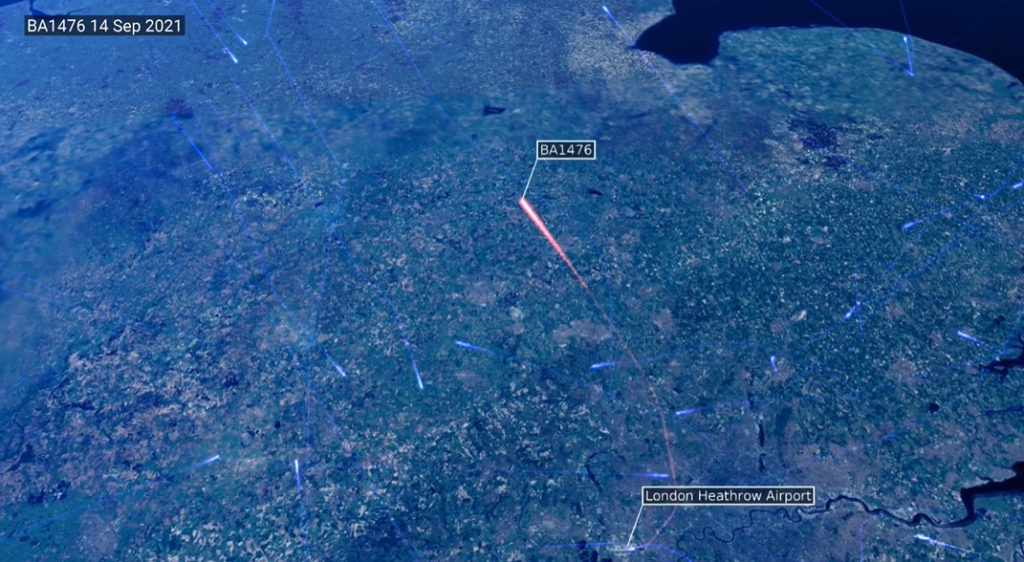Air traffic controllers aid Perfect Flight demonstration
A cross-industry collaboration of aviation partners demonstrated how they are working towards the ‘Perfect Flight’, with a flight between Heathrow and Glasgow on 14 September , showing the efforts being made to reduce aviation’s carbon footprint. Led by British Airways and involving Heathrow and Glasgow airports, Airbus and bp, it was up to NATS to ensure that air traffic controllers optimised the flight profile and provided the most direct routing.

The flight proved to be a great success, reducing CO2 emissions by 62% compared to the original Perfect Flight more than a decade ago.
Operations teams across NATS control centres at Swanwick, Hampshire and Prestwick, Ayrshire, as well as those at the control towers at Heathrow and Glasgow airports, have been planning for months to ensure an uninterrupted journey and achieve minimal delay and emissions.
Starting at Heathrow, controllers approved the pushback of the aircraft without delay and provided the shortest possible taxi route to the nearest appropriate runway holding point. Information on the anticipated timing of the take-off was given to the crew so that the engines were not started up too early, avoiding the use of additional fuel, but were still ready for departure. A runway intersection clearance was given, so the pilot did not need to use the full length of the runway for take-off, again increasing efficiency.
Controllers then assured a continuous climb, with no levelling off, once the plane had followed the Noise Preferential Route to 4,000ft, before passing the pilot onto NATS colleagues based at Swanwick who are responsible for all flights in the London Terminal Manoeuvring Area (TMA) and en route airspace over England and Wales up to the Scottish border.
The most direct routing with a continuous climb to cruising altitude was given by Swanwick controllers as well as the most optimal flight level. Due to the meticulous pre-planning, there were minimal tactical interventions by the controllers along the way, so the pilot navigated to the agreed waypoint before arriving at the chosen point of descent. After speaking with Prestwick Control Centre, the aircraft was able to follow a continuous descent approach into Glasgow Airport, where controllers in the tower there guided it into land without airborne holding and with the most efficient taxi in.
The Airbus A320neo used for this year’s demonstration towards a ‘Perfect Flight’ was able to fly without the everyday but necessary constraints imposed on air traffic because it was a special project, but modernising airspace will make flying more efficient, providing even greater CO2 reductions and ensuring aviation can continue to connect people and goods in a sustainable way. While the ‘Perfect Flight’ might not be a reality today, the industry has made great progress over the last decade, and with further collaboration and stakeholder and Government support, the industry can move closer still to the ‘Perfect Flight’ in the future.
The data from the British Airways BA1476 flight will now be analysed, to fully understand the benefits and how the techniques and procedures used can be implemented in the everyday and in the future.
Ian Jopson, Head of Sustainable Operations, NATS said: “We learn a lot from projects like this, which can inform future airspace designs and ultimately make UK skies more sustainable. We have pledged to fully support the aviation industry’s commitment to achieve net zero carbon emissions by 2050 and demonstrations like the Perfect Flight are an important step to achieving that.”
This is British Airways’ first ever passenger flight to be powered directly by sustainable aviation fuel (SAF); remaining emissions were offset. The journey emulated the first Perfect Flight that operated to Edinburgh in 2010. At the time, neither offsetting nor sustainable aviation fuel were available.
